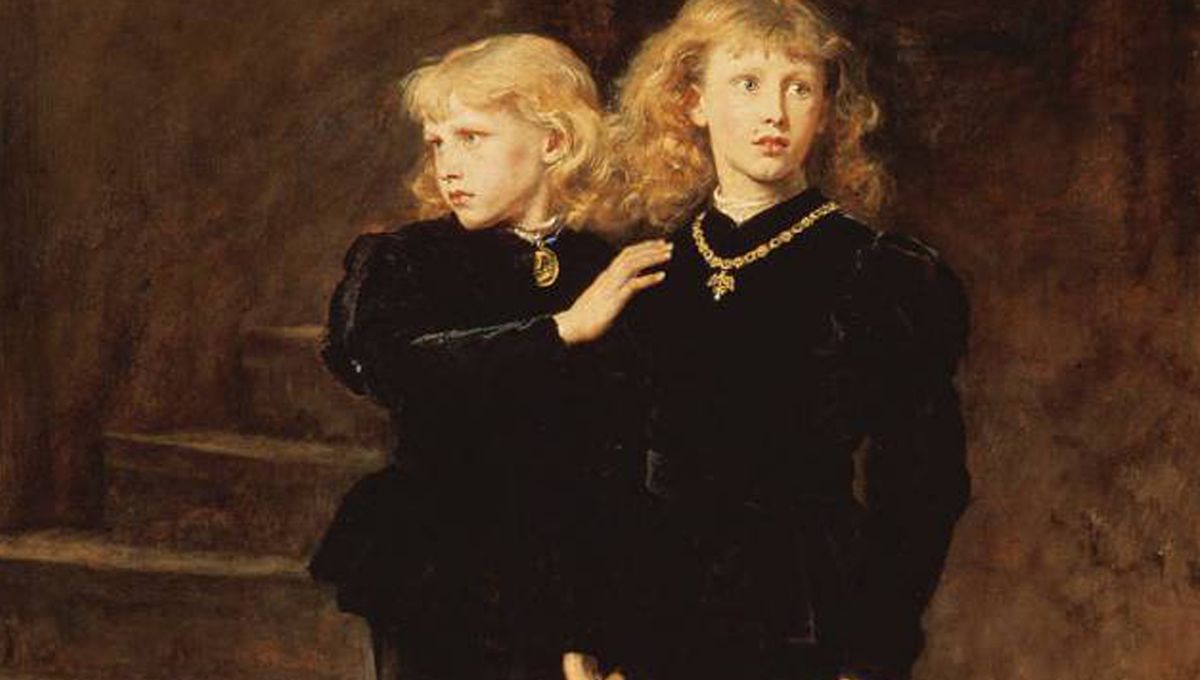
In 1483, two young princes in line for the throne entered the Tower of London and were never seen again. After 191 years, the remains of two young children were uncovered in Windsor Castle buried beneath a stone staircase.
After an examination of the remains in 1933, the bones were placed back into an urn and left in Westminster Abbey. They haven’t been allowed to be examined since.
The princes in the tower
The two young half-brothers – Edward V, aged 12, and Richard of York, aged 9 – were under the rule of their father King Edward IV. As the eldest, Edward V was next in line for the throne when their father passed in 1483.
While preparations were made to crown King Edward V, the two boys were placed in the Tower of London for their own protection. However, after only a few months as king, it was announced that Edward V and his half-brother were the product of a bigamous marriage, meaning neither were eligible to be crowned king.
After Edward V was deposed, his uncle King Richard III took his place as next in line. When the boys were placed in the tower shortly after their father’s death, they were never seen in public again. Rumors began to circulate that the two had been murdered by the person looking to take their places on the throne – King Richard III.
The remains
In 1674, the remains of two young children were found by workers carrying out repairs in Windsor Castle. Without the capabilities to accurately determine the identity of the children, the remains were placed into an urn and delivered to Westminster Abbey, where they still sit today.
As curiosity grew, so did forensic capabilities, leading to the bodies being re-examined in 1933. At the time, it was determined that the remains belonged to two young boys who died around the year 1483 – but without the ability to carbon date the bones, it’s likely this examination provided only speculative data.
This examination was the last time anyone has been allowed to study the remains.
In 2012, after the remains of Richard III were found buried beneath a car park in Leicester, there was once again hope in potentially identifying the princes.
In identifying Richard III’s remains, members of the group Revealing Richard III identified a living distant relative of the late king. It was hoped the same forensics used on this case could help identify Richard III’s nephews, the princes.
However, the request to re-examine the bodies was denied the following year. The Church of England, Government ministers, and the Queen herself all categorically denied the request, stating they were in “full agreement” that the investigation should not go ahead.
Requests for the same investigation had been submitted both by the BBC in 1993, and Channel 4 in 1995, all of which were denied.
The then Dean of Westminster, the Very Rev Michael Mayne, refused the requests on the basis that the results of carbon dating would only show the death within plus or minus 50 years, nor would they be able to determine the age of the deceased.
There were also concerns that retrieving DNA samples from a close relative of the princes would mean opening other tombs. The question of what to do with the remains if they were found to not belong to the princes was also raised by the Dean.
The Missing Princes Project
Philippa Langley MBE, who led the search for Richard III, began conducting a research initiative in 2015 titled the Missing Princes Project, calling for the “bones in the urn’”to be investigated.
This Cold Case History investigation employs the same practices as modern police investigations. Volunteers from copious academic backgrounds are being called on to assist with the investigation, focusing on archive searches, Paleography, and key foreign languages.
In December 2021 the team uncovered evidence of a deal that had been made allowing Edward V to adopt the name “John Evans” and live on his half-brother’s land in Devon.
The Missing Princes Project lead researcher told the Daily Telegraph “The evidence suggests that Edward was sent to live out his days on his half-brother’s land as long as he kept quiet, as part of a deal reached between his mother and Richard III, and later with Henry Tudor.”
Experts working on the case theorize that the tale of the murdered princes of the tower may have been concocted as a political move against King Richard III.
Source Link: The Mystery Of "The Princes In The Tower"